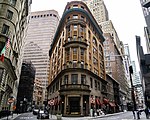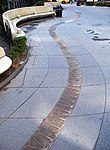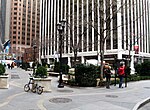15 William
Financial District, ManhattanResidential buildings completed in 2008Residential skyscrapers in ManhattanUse mdy dates from August 2019

15 William, formerly known as the William Beaver House, is a 47-story, 528-foot-tall (161 m) condominium apartment building at 15 William Street in the Financial District of Manhattan, New York City. It opened in 2008, at which time it was the only ground-up residential development in the Financial District. 15 William was designed by the New York firms Tsao & McKown, Ismael Leyva Architects, and SLCE Architects, with interiors and public spaces designed by SPAN Architecture and Allied Works Architecture. It was developed by SDS Investments, Sapir Organization, André Balazs Properties, and CIM Group.
Excerpt from the Wikipedia article 15 William (License: CC BY-SA 3.0, Authors, Images).15 William
William Street, New York Manhattan
Geographical coordinates (GPS) Address External links Nearby Places Show on map
Geographical coordinates (GPS)
| Latitude | Longitude |
|---|---|
| N 40.7054 ° | E -74.01 ° |
Address
William Beaver House
William Street
10038 New York, Manhattan
New York, United States
Open on Google Maps










